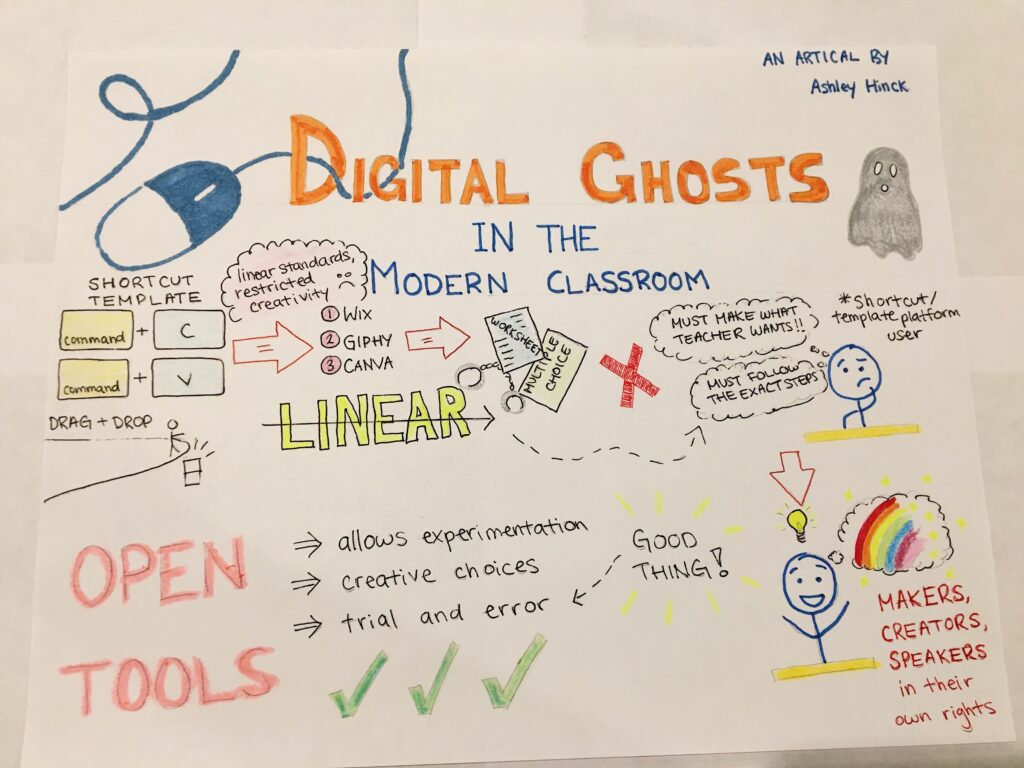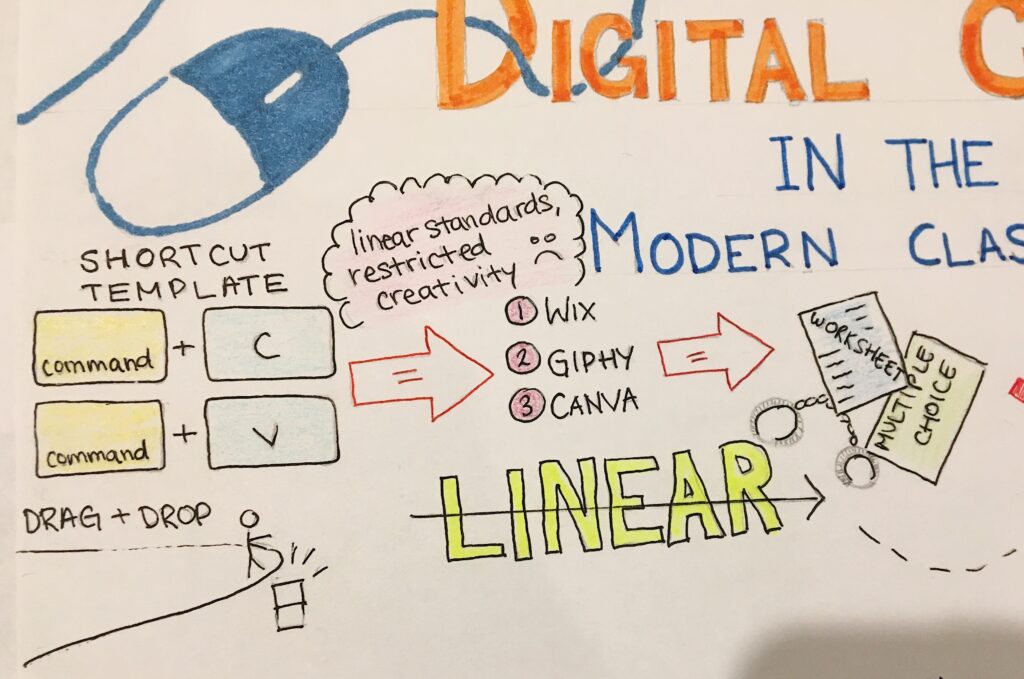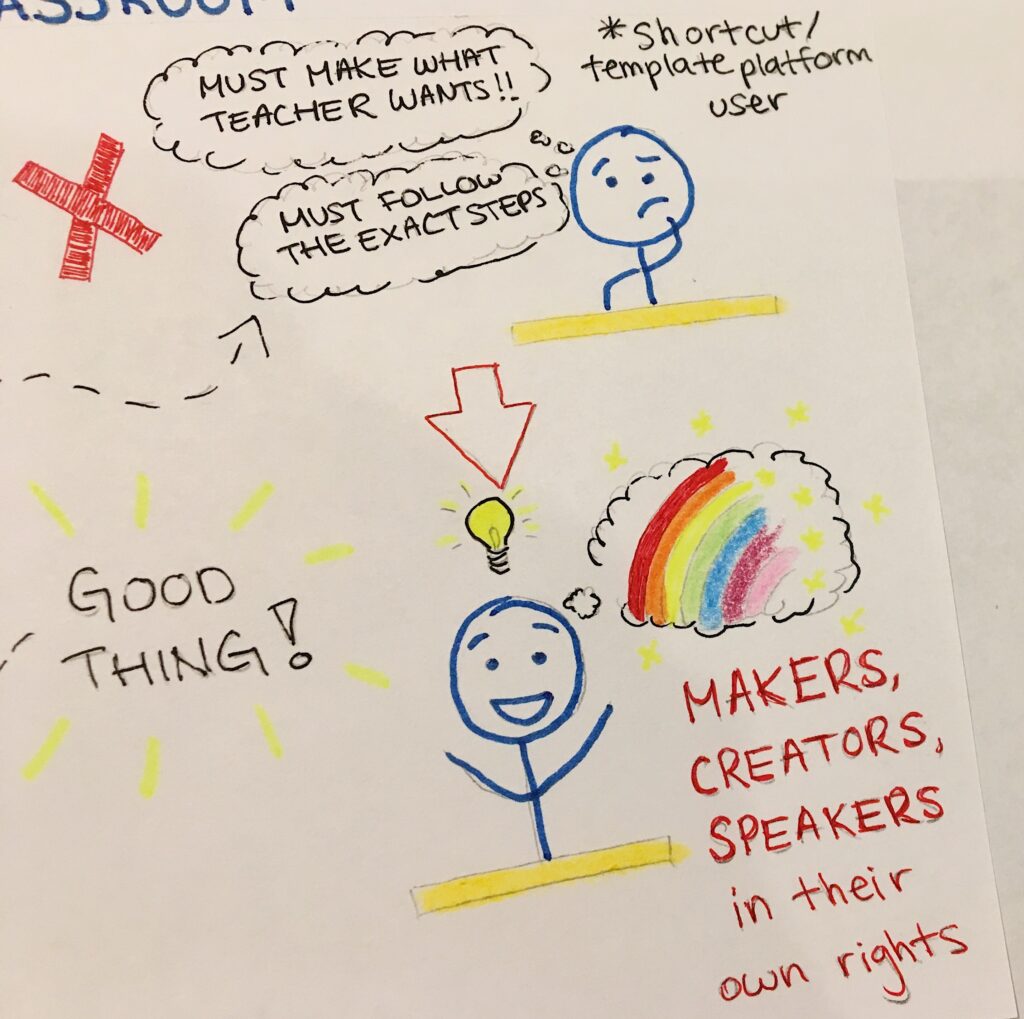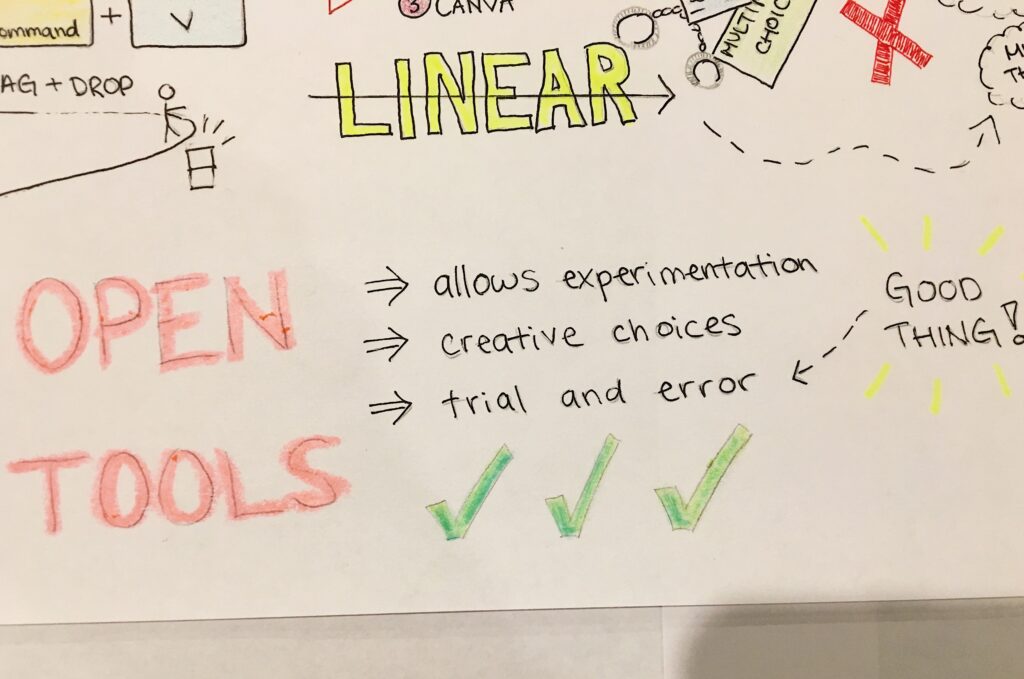
I chose to read Ashley Hinck’s Article Digital Ghosts In The Modern Classroom, which discusses the barriers in today’s teaching system throughout digital making. Students enter digital courses expecting to create great artifacts through the use of technological tools though, what most students are used to are shortcut templates that are preset by most technological programs. These linear focuses are nothing new to the classroom as the same protocol exists with the standardized worksheet and multiple choice testings, the same creativity limiting aspect passed down year after year. Hinck goes on to point out that the use of these tools (e.g. Fix, Google Slides, Canva, etc.) affects students learning as it suppresses the students ability to MAKE and reinforces the assumptions of restricted learning outcomes, causing a fear in students to step out of those guidelines to create something new. Digital culture has experienced a withdrawal of trial and error for the reassuring device of a guaranteed working product with little to no risk of failure. Students have this routine approach embedded in their minds since Pre-K, the constant step by step rubrics, and the instinct to create a product the teacher wants and deemed as the right answer.

I used the tool of a sketch note to visual map out the key ideas and themes found throughout Hinck’s article. By doing so, I am able to control the approach of my learning completely, choosing the symbols, words, colours, fonts, etc. Broken down to 3 portions, I first represent the “drag and drop” excerpt and relate the use of the shortcut templates that eliminate the need for technological knowledge to the tired notion of worksheets and multiple choice technologies (which, let’s be real, none of us learned from and just memorized the information needed for the time being and forgot all about it the next day). Throughout most of my educational pathway, I relied on these preset applications to create what I believed to be an artistically organized guaranty for a good grade, and the best part? I had to do the bare minimum work because hey, it was all already set up for me and I just needed to input the information, how amazing! Though, seeing it as an amazing concept then, I can surely agree that my desire of creativity has shot down to an all time low since, as I am not used to creating ideas from scratch and putting in the creative effort. The lack of that experimentation has made me feel fearful in assignments such as this one since my mind is so used to having strict steps to follow and ensure the teacher’s expectations. Continuing to push out of that mindset will set a great record of creative flow.

Next, we have what Hinck encourages educators to do with their students. Supporting students to become makers, creators, and speakers, instead of shortcut platform users. Creating the urge to experiment and build original ideas from scratch is what we want students to be comfortable and confident with (just look how happy little stick figure man is now!). Promoting trial and error, mistakes are OKAY and needed!

Open tools allow creative choices and build a stronger learning environment for students, it’s time to help our students claim themselves as creatives and have the ability to practice doing so in a safe space. Integrating such open tools into the classroom will create a future of confident creatives and the sooner we let go of the digital ghosts, the sooner we build a new system of success.
